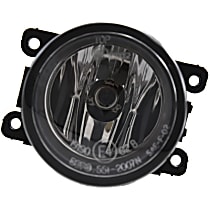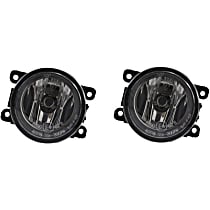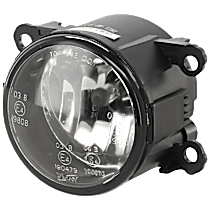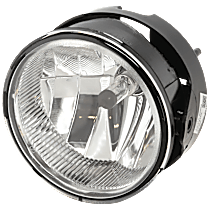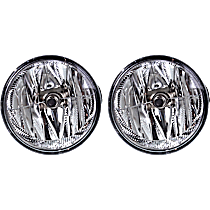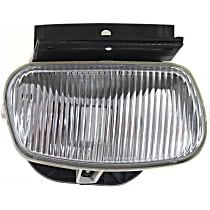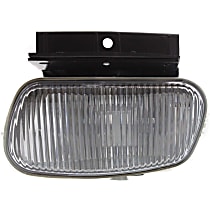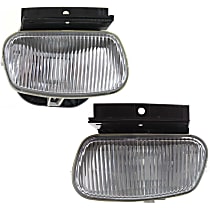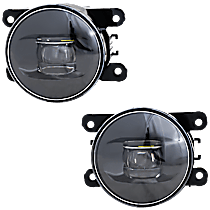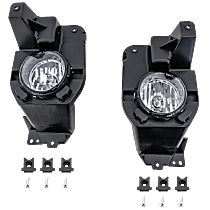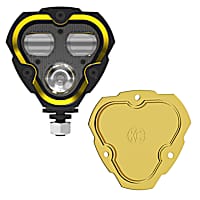Ford Ranger Fog Lights
Shop Catalog
![]() WARNING: This product can expose you to chemicals including Chromium, which is known to the State of California to cause cancer and birth defects or other reproductive harm. For more information go to www.P65Warnings.ca.gov.
WARNING: This product can expose you to chemicals including Chromium, which is known to the State of California to cause cancer and birth defects or other reproductive harm. For more information go to www.P65Warnings.ca.gov.
![]() WARNING: This product can expose you to chemicals including Chromium, which is known to the State of California to cause cancer and birth defects or other reproductive harm. For more information go to www.P65Warnings.ca.gov.
WARNING: This product can expose you to chemicals including Chromium, which is known to the State of California to cause cancer and birth defects or other reproductive harm. For more information go to www.P65Warnings.ca.gov.
![]() WARNING: This product can expose you to chemicals including Chromium, which is known to the State of California to cause cancer and birth defects or other reproductive harm. For more information go to www.P65Warnings.ca.gov.
WARNING: This product can expose you to chemicals including Chromium, which is known to the State of California to cause cancer and birth defects or other reproductive harm. For more information go to www.P65Warnings.ca.gov.
![]() WARNING: This product can expose you to chemicals including Chromium, which is known to the State of California to cause cancer and birth defects or other reproductive harm. For more information go to www.P65Warnings.ca.gov.
WARNING: This product can expose you to chemicals including Chromium, which is known to the State of California to cause cancer and birth defects or other reproductive harm. For more information go to www.P65Warnings.ca.gov.
![]() WARNING: This product can expose you to chemicals including Chromium, which is known to the State of California to cause cancer and birth defects or other reproductive harm. For more information go to www.P65Warnings.ca.gov.
WARNING: This product can expose you to chemicals including Chromium, which is known to the State of California to cause cancer and birth defects or other reproductive harm. For more information go to www.P65Warnings.ca.gov.
![]() WARNING: This product can expose you to chemicals including Chromium, which is known to the State of California to cause cancer and birth defects or other reproductive harm. For more information go to www.P65Warnings.ca.gov.
WARNING: This product can expose you to chemicals including Chromium, which is known to the State of California to cause cancer and birth defects or other reproductive harm. For more information go to www.P65Warnings.ca.gov.
![]() WARNING: This product can expose you to chemicals including Chromium, which is known to the State of California to cause cancer and birth defects or other reproductive harm. For more information go to www.P65Warnings.ca.gov.
WARNING: This product can expose you to chemicals including Chromium, which is known to the State of California to cause cancer and birth defects or other reproductive harm. For more information go to www.P65Warnings.ca.gov.
![]() WARNING: This product can expose you to chemicals including Chromium, which is known to the State of California to cause cancer and birth defects or other reproductive harm. For more information go to www.P65Warnings.ca.gov.
WARNING: This product can expose you to chemicals including Chromium, which is known to the State of California to cause cancer and birth defects or other reproductive harm. For more information go to www.P65Warnings.ca.gov.
![]() WARNING: This product can expose you to chemicals including Chromium, which is known to the State of California to cause cancer and birth defects or other reproductive harm. For more information go to www.P65Warnings.ca.gov.
WARNING: This product can expose you to chemicals including Chromium, which is known to the State of California to cause cancer and birth defects or other reproductive harm. For more information go to www.P65Warnings.ca.gov.
![]() WARNING: This product can expose you to chemicals including Chromium, which is known to the State of California to cause cancer and birth defects or other reproductive harm. For more information go to www.P65Warnings.ca.gov.
WARNING: This product can expose you to chemicals including Chromium, which is known to the State of California to cause cancer and birth defects or other reproductive harm. For more information go to www.P65Warnings.ca.gov.
![]() WARNING: This product can expose you to chemicals including Chromium, which is known to the State of California to cause cancer and birth defects or other reproductive harm. For more information go to www.P65Warnings.ca.gov.
WARNING: This product can expose you to chemicals including Chromium, which is known to the State of California to cause cancer and birth defects or other reproductive harm. For more information go to www.P65Warnings.ca.gov.
![]() WARNING: This product can expose you to chemicals including Chromium, which is known to the State of California to cause cancer and birth defects or other reproductive harm. For more information go to www.P65Warnings.ca.gov.
WARNING: This product can expose you to chemicals including Chromium, which is known to the State of California to cause cancer and birth defects or other reproductive harm. For more information go to www.P65Warnings.ca.gov.
![]() WARNING: This product can expose you to chemicals including Chromium, which is known to the State of California to cause cancer and birth defects or other reproductive harm. For more information go to www.P65Warnings.ca.gov.
WARNING: This product can expose you to chemicals including Chromium, which is known to the State of California to cause cancer and birth defects or other reproductive harm. For more information go to www.P65Warnings.ca.gov.
![]() WARNING: This product can expose you to chemicals including Chromium, which is known to the State of California to cause cancer and birth defects or other reproductive harm. For more information go to www.P65Warnings.ca.gov.
WARNING: This product can expose you to chemicals including Chromium, which is known to the State of California to cause cancer and birth defects or other reproductive harm. For more information go to www.P65Warnings.ca.gov.
![]() WARNING: This product can expose you to chemicals including Chromium, which is known to the State of California to cause cancer and birth defects or other reproductive harm. For more information go to www.P65Warnings.ca.gov.
WARNING: This product can expose you to chemicals including Chromium, which is known to the State of California to cause cancer and birth defects or other reproductive harm. For more information go to www.P65Warnings.ca.gov.
Top Rated Products
Popular Products
Customer Guides
Fog light is a complementary lighting device to your Ford Ranger headlights. With this in tandem, road visibility could be maximized with the headlights casting low beams of rays while fog lights emit clearer and sharper ones to help mix-in with the reflections of lights created thus, enough amount of lights and wider illumination will aid the drivers of the road to avoid colliding with another vehicle. And because, road safety and protection should always be a priority on all road activities, it is highly recommended that your vehicle is equipped with necessary lighting device along with other safety automotive components.
And because of the fact that Ford Ranger participation in the industry is one that is expected to be among those that competes with the grueling road activities of off-roads, as well as the smooth flow of the on-roads, it is a requirement that these vehicles are equipped with safety add-ons. Ford Ranger fog lights are provided in the market to ensure promotion of safety and protection to all road events will preempt any kind of road mishaps.
Even with the significant role fog lights can provide to the vehicles, installing it will not be enough. It is important to consider the amount of beams that you would be casting off the road. Before installing Ford Ranger fog lights, determine the enough amount of glare that you are going to cast off with two factors to be considered: enough amount of glare that you are going to tolerate and how much other drivers should receive.
You know you bought a Ford Ranger because you can count on it to carry you through any adventure. Fog lights sweeten the deal even more because they provide badly needed illumination through the darkest nights or even the worst weather. Seeing that these fog lights are a worthwhile investment, it makes sense to keep an eye out on their condition as you use and abuse them to their fullest potential. It's easy enough to determine when your fog lights are struggling a bit, and here are the most common things you can keep an eye out for-and the simple things you can do to take care of the trouble.
Dim or faded lights
The most common sign that your fog lights are in trouble is when the light it throws off starts coming across as a little weaker than it used to be. Naturally, your first instinct would be to blame faulty electrical wiring-it's fairly obvious enough. But before you start groaning in frustration and pulling out your wallet to change out the entire fog light, you might want to check first the condition of your lens.
Sometimes, faded lights are caused by problems with the lens. You either have fogging or condensation inside the lens due to a break in the seal that keeps the lens in place. If the cause of the fading or diming is the lens-you're in luck. The lens is easy to clean and, worse comes to worse, not too costly to replace at all. If the trouble is the electrical connections, it's still not too late, as the diming indicates a fault, not a breakdown. Unless you have experience with wiring, it's better to consult a mechanic.
No lights at all
When the fog lights refuse to engage, it's a big chance that the wiring is completely messed-up. You should still physically check the entire fog light and all its components. Sometimes, things are still repairable and you wouldn't need to purchase a replacement just yet. If the fault lies in the wiring, it's a cheap enough replacement. It's when the fault is with the assembly, structure, and components of the fog light that might necessitate a full replacement.
Since coming out in 1983, the Ford Ranger has been one of America's most durable and enduring icons of rugged class. It is one of the true pickup greats that have rolled off the Ford assembly lines in recent years. Unsurprisingly, a lot of products have become popular with the Ranger and its owners over the years, all geared towards on common goal of making the Ranger a true adventure ride. Fog lights are one of the most popular because they enhance the range and capabilities of the Ford Ranger in even the darkest nights and the worst of weather conditions. For that reason-relevant reliability-it is important to always make sure that your Ford Ranger fog lights are in the best condition to better undertake the task they were designed for.
Check for problems as they happen
Fog lights are very durable by design. After all, the conditions that they're designed to operate in-extreme weather and inhospitable environments-could all potentially mess up their sensitive electrical components. As with any part on your truck, there are many vulnerable points to look out for. The most vulnerable of all, perhaps, are the seals that keep the lens in place. Normally, these are supposed to keep out water and other harmful substances that might cause damage to the fog light internally. As they wear out over time, however, these seals eventually let all that nastiness in. Once you notice condensation forming on the lens, or the lens fogging up, it's time to-not just clean the lens-but reinforce the seals themselves.
Keep things clean-always
Cleanliness is one of the most vital parts of overall maintenance that people easily neglect. When it comes to fog lights, there are two aspects that need your attention. The first is to clean the external-or exposed-components of your fog lights. Invariably, that means the jutting lenses. Any normal water-and-soap mix is good enough. Just make sure that you use a clean, smooth cotton rag to wipe it down to avoid unnecessary scratches. The second is to make sure the internal components are dusted off and wiped down. Do not use any liquids in cleaning as the electrical wiring is part of the internal system of the fog lights.
Which Ford Ranger fog light color is better and brighter--yellow or white?
Contrary to popular belief, a white or blue fog light is just as effective as a yellow one. It is said that yellow fog lights are brighter and give greater visibility compared to blue or white ones, but this is far from the truth. This myth is just a misinterpretation of the principle of light scattering. Basically, fog lights work well regardless of their color. Their light waves easily penetrate the water particles in fog and mist, allowing drivers to see clearly despite extreme weather conditions. It doesn't matter whether the Ford Ranger fog light is yellow, white, green, or even blue. As long as it is properly installed and positioned at the right angle, it will work just fine. For aesthetic purposes, it would be best to choose a color that will complement the Ford Ranger's overall exterior style.
What's the best location for the Ford Ranger fog light--in the grille or on the bumper?
It doesn't matter where the fog light is mounted, as long as it gives the driver maximum visibility and ensures road safety at all times. An in-grille fog light may help enhance and customize the Ford Ranger's overall look, but this aftermarket accessory lighting system can be quite heavy on the pocket. It's not that easy to install as well, so prepare to spend some money getting this fog light wired up on the Ranger. Bumper-mounted fog lights, on the other hand, offer a more convenient installation process. They can be easily drilled and mounted on the bumper, so there's no need to take the Ranger to a mechanic to install the fog lights. Given their location, bumper-mounted fog lights are also more effective in illuminating the road at high-speed situations. Generally, bumper-mounted fog lights offer more benefits compared to in-grille lighting configurations.
The Ford Ranger fog lights are not functioning properly even though the bulbs are still in good working condition. What could be causing this problem?
This could be a wiring problem, as the bulbs are still working but the entire Ford Ranger fog light assembly has gone kaput. A voltmeter may be used to test all parts of the fog light circuit and determine the root of the problem. A faulty switch or a blown fuse should be immediately replaced so that the fog lights would start working again.
